I’m not sure I can say Chiropractic care can fully correct Scoliosis but plenty of research shows that Chiropractic care can make a significant difference. Scoliosis is THE most common Spinal Deformity across the world according to clear-institute.org, a non-profit that provides training and certification for Doctors of Chiropractic who want to specialize in working on Scoliosis patients.
Scoliosis is found to be more common in women than in men and affects about 2-3% of the US population OR roughly 6-9 million people in the US. So why is scoliosis a problem? Well, when you consider that the spine houses and protects the spinal cord and vital nerve roots and it needs to be optimally ALIGNED for your nerve system to function properly, than it makes sense on how scoliosis can be so devastating. It all depends on how bad the curvature of the spine is.
Small curves will affect the bio-mechanics and functionality of the spine and larger curves are even worse. Very large curves for example will cause damage to the individual vertebra and lead to arthritis of the spine. As the scoliosis gets worse it can lead to lung and heart problems. The lungs can even rub against the pelvis. After the lungs are fully developed they can end up severely rubbing against the ribs making it harder to breathe, which means less oxygen to the body.
Understanding Scoliosis
What is Scoliosis?
Scoliosis is a medical condition characterized by an abnormal curvature of the spine. The spine is meant to have gentle curves when viewed from the side, but in scoliosis, there is a sideways curvature that may resemble an “S” or a “C” shape. This condition can affect people of all ages, and it varies in severity.
Types of Scoliosis (Idiopathic, Congenital, Neuromuscular)
- Idiopathic Scoliosis: Idiopathic scoliosis is the most common type, and it occurs without a known cause. It often develops during adolescence and may progress over time.
- Congenital Scoliosis: Congenital scoliosis is present at birth and is typically caused by abnormal spinal development in the womb. It may require early intervention and specialized treatment.
- Neuromuscular Scoliosis: Neuromuscular scoliosis is linked to underlying neuromuscular conditions such as cerebral palsy or muscular dystrophy. These conditions can affect muscle control and contribute to spinal curvature.
Causes and Risk Factors
The exact cause of idiopathic scoliosis remains unknown, but potential factors include genetics and hormonal changes during puberty. Congenital scoliosis results from embryonic development issues, while neuromuscular scoliosis is associated with underlying neurological or muscular disorders. Risk factors for idiopathic scoliosis often include family history and gender, as girls are more commonly affected.
Signs and Symptoms of Scoliosis
Scoliosis can manifest in various ways, and its symptoms may include:
- Uneven shoulder or hip heights.
- One shoulder blade appearing more prominent than the other.
- A visibly curved spine when bending forward.
- Uneven waistline.
- Back pain, particularly in adolescents.
- Fatigue or discomfort after prolonged periods of sitting or standing.
Diagnosis and Measurement (Cobb Angle)
Diagnosis of scoliosis typically involves a physical examination, including a visual assessment of the spine’s alignment. The Cobb angle, determined through X-rays, is a crucial measurement used to quantify the severity of the spinal curvature. It helps guide scoliosis treatment plans and monitor progress over time.
Understanding the various types of scoliosis, its causes, and recognizing the symptoms is essential for determining appropriate treatment options. Chiropractic care is one of the treatment modalities that can be considered, particularly for idiopathic scoliosis, to address symptoms like back pain and potentially aid in managing scoliosis curvature through chiropractic adjustments as part of a comprehensive treatment plan.
If left untreated severe cases can even shorten a person’s lifespan…
Unfortunately, for many families dealing with a child with scoliosis they are told by their medical Doctor to “watch and wait.” Although, the Doctor has their patient’s best interest in mind they aren’t really giving them the best advice because why would a person want to watch and wait for a possible pending disaster? Wouldn’t it be best to take a proactive approach rather than a reactive? And, in the Doctor’s defense they aren’t fully trained on all there is to know about Scoliosis. Common medical treatments include uncomfortable bracing which affects the psychology of the child and the child’s ability to move and function normally. The other treatment would involve scoliosis surgery which is very complex and can lead to permanent disability,
A more natural approach to caring for the Scoliosis patient involves corrective Chiropractic care. According to Dr. Dennis Woggon, founder of the CLEAR Institute, scoliosis does not start in the Cobb’s angle (the angle is used to measure the curvature of the spine) it starts in the head. He states that the Cobb angle is only a “reaction to the unaddressed subluxation resulting from abnormal bio-mechanics.” First of all, a simplified version of a subluxation in this context is a misalignment of the vertebra that irritates the nerve root(s) and spinal cord and effects the ability of the brain to fully communicate with the body. To put it in a nutshell: subluxations cause neurological interference. This neurological interference can affect the postural muscles of the spine and lead to scoliosis (see figure 1).
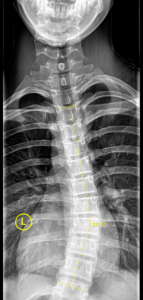
So how can Correct Chiropractic Care help?
Corrective Chiropractic care has proven to be very effective in treating scoliosis, but we are talking very specific corrective Chiropractic care. There are Doctors in the Chiropractic profession who specialize in correcting scoliosis. Clear Certified Doctors have gone through extensive training in correcting scoliosis and have a very complex approach which includes whole body vibration therapy, traction, spinal weighting, and other modalities. Doctor Woggon points out that correction of both the cervical and lumbar lordotic curves is an absolute must in the correction of scoliosis, mainly because it creates abnormal stress on the spinal cord (see figure 2).
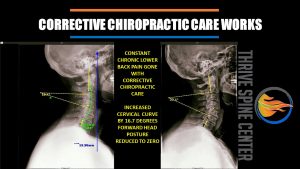
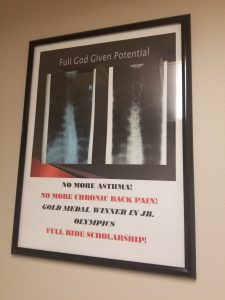
At Thrive Spine Center, we place a special emphasis on correcting the cervical and lumbar lordotic curves. We utilize pre and post digital x-rays, cervical and lumbar wedges, as well as postural corrective techniques. We utilize vibration therapy to help relax and ease the muscles alongside the spine. We are also exploring more advanced techniques like the CLEAR approach to be able to help more scoliosis patients.
The Chiropractic Approach to Scoliosis
Chiropractic care has a long history of providing alternative treatment options for various musculoskeletal conditions, including scoliosis. Over the years, chiropractors have developed specialized approaches to address the unique needs of people with scoliosis.
Theoretical Basis for Chiropractic Treatment of Scoliosis
Chiropractic care is grounded in the belief that the spine plays a crucial role in overall health, and that spinal adjustments can help correct misalignments and alleviate related symptoms. In the context of scoliosis, chiropractors assert that regular chiropractic care can help ease scoliosis symptoms by relieving muscle tension and addressing spinal misalignments that often accompany the condition.
Specific Chiropractic Techniques for Scoliosis
Chiropractors who specialize in scoliosis often recommend individualized treatment plans tailored to the unique needs of each patient. These plans may include a variety of chiropractic techniques, with spinal adjustment being a central component. By applying gentle and controlled force to the spine, chiropractors aim to improve spinal alignment and reduce the curvature associated with scoliosis. Other techniques, such as soft tissue manipulation and exercises, may also be incorporated to complement the treatment.
Patient Assessment and Treatment Planning
When someone is diagnosed with scoliosis or is suffering from scoliosis-related pain, visiting a chiropractor who understands the condition is crucial. Chiropractors will typically conduct a thorough evaluation to assess the severity of the scoliosis curve, the presence of any associated symptoms, and the overall health of the patient. Based on this assessment, they will create a personalized treatment plan designed to address the root causes of scoliosis and improve the patient’s quality of life.
Chiropractors often recommend that scoliosis patients receive spinal adjustments regularly to slow progression and avoid scoliosis surgery. This approach aligns with the belief that chiropractic care offers more benefits than just symptom relief—it aims to correct scoliosis before patients experience further discomfort and complications.
In essence, exploring treatment through chiropractic care for scoliosis means finding a chiropractor that avoids the cookie-cutter approach and instead offers a long-term scoliosis treatment plan designed to fix the underlying issues. By working with someone who understands scoliosis, individuals with the condition may discover a holistic approach to managing their scoliotic pain and enhancing their overall well-being. Chiropractic care can be a valuable addition to the range of successful treatments for scoliosis, offering hope for those living with this condition.
Collaborative Care
Importance of a Multidisciplinary Approach
Scoliosis is a condition that can significantly impact an individual’s life, often causing scoliosis pain and discomfort. While some cases of scoliosis may be mild, others can be more severe, making it crucial to explore various avenues for help with scoliosis. In addressing this condition, a multidisciplinary approach that combines the expertise of different healthcare professionals can be highly beneficial.
Chiropractic care, particularly when tailored to treat scoliosis, can offer unique benefits. Chiropractic adjustments can help individuals with scoliosis by focusing on spinal alignment and mobility. However, it’s essential to recognize that scoliosis is a complex condition that may require more than just traditional chiropractic adjustments.
Coordination Between Chiropractors and Medical Professionals
To maximize the benefits of chiropractic care for scoliosis, coordination and communication between chiropractors and medical professionals are crucial. A chiropractor understands your condition and can help adjust chiropractic treatment plans to address your specific needs. Chiropractors often work in collaboration with orthopedic specialists, physical therapists, and other healthcare providers who specialize in treating scoliosis and scoliotic pain.
For adolescents, especially those with adolescent idiopathic scoliosis, early intervention and a coordinated approach can be particularly vital. Scoliosis is often diagnosed during adolescence, and individuals suffering from scoliosis are encouraged to seek chiropractic care as part of a comprehensive treatment plan. This collaboration ensures that the condition is addressed comprehensively, considering both the structural and functional aspects of the spine.
Surgery as a Last Resort
In some severe cases of scoliosis, surgery may be considered as a last resort to correct the curvature of the spine. However, surgery is a significant decision and should only be pursued when all other non-invasive treatments for scoliosis and scoliotic pain have been explored. Chiropractic care, when designed to fix the root causes of scoliosis and provide ongoing support, may help correct scoliosis before you experience the need for surgical intervention.
Living with scoliosis can be challenging, and it’s essential to explore all available options for help with scoliosis, including chiropractic care. Chiropractors, in collaboration with medical professionals, offer a holistic approach to treating your scoliosis, addressing not only the common symptom of scoliosis pain but also the underlying structural issues.
By working together, they can provide individualized care that focuses on improving your quality of life and reducing the impact of scoliosis on your daily activities. Remember that every scoliosis case is unique, and a chiropractor will find the best approach to help correct scoliosis and provide relief from scoliotic pain, potentially avoiding the need for surgery or bracing because it can help straighten your spine and help reduce pain.
For further information please call our office at 916-587-1276 For information regarding the CLEAR Institute check out, www.clear-institute.com
References:
Dr. Woggon, Dennis. (May 2006) Can Chiropractic Care Help Scoliosis? The American Chiropractor, #28 (5) Pgs 24-25.

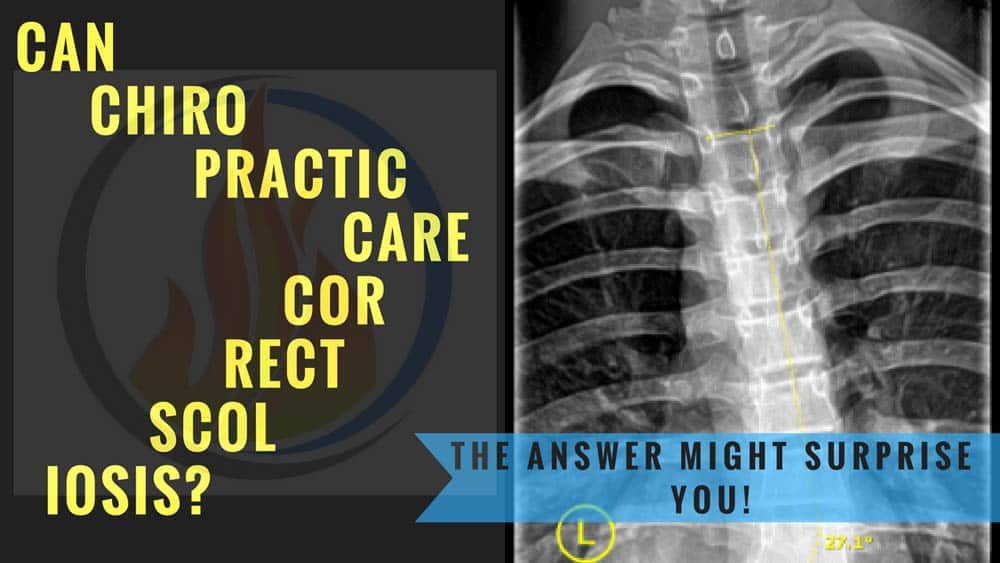
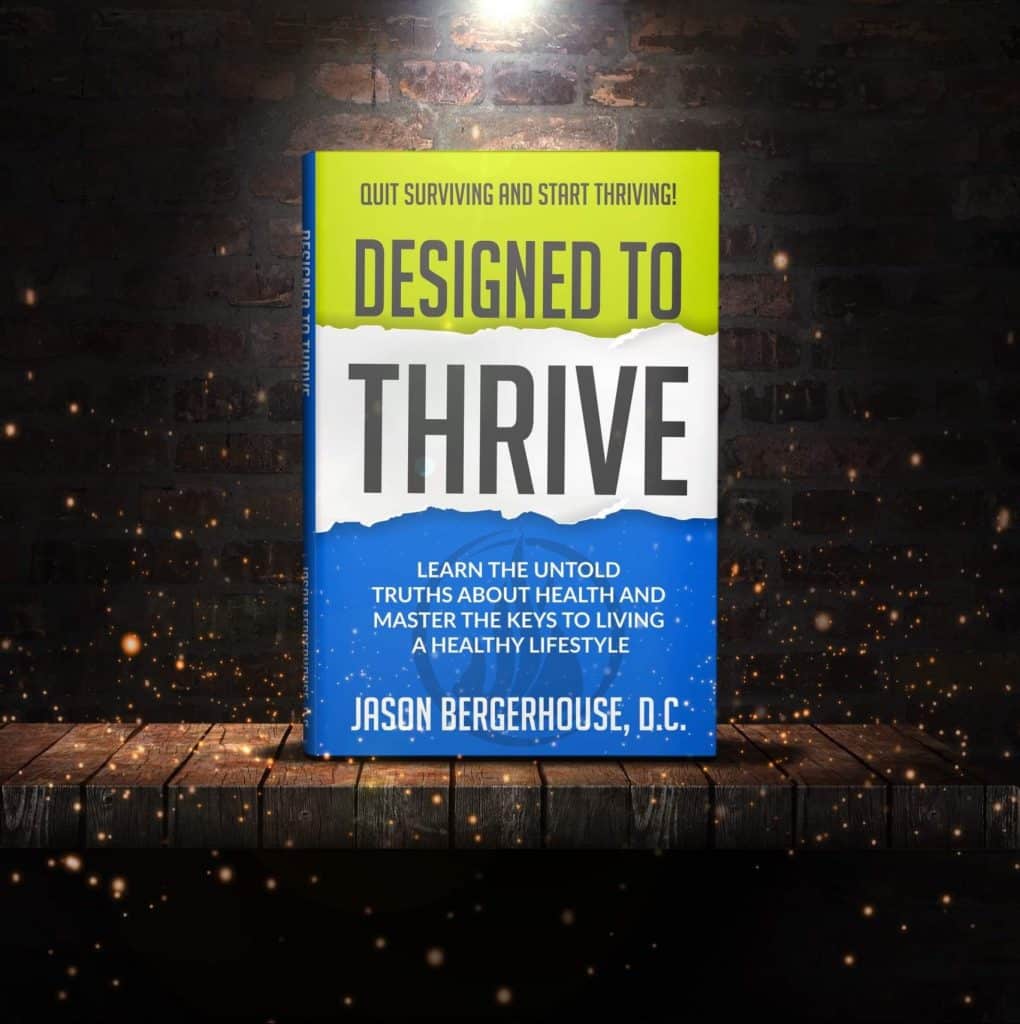
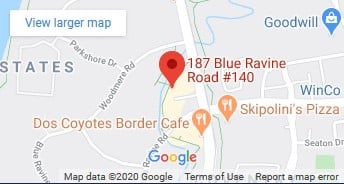
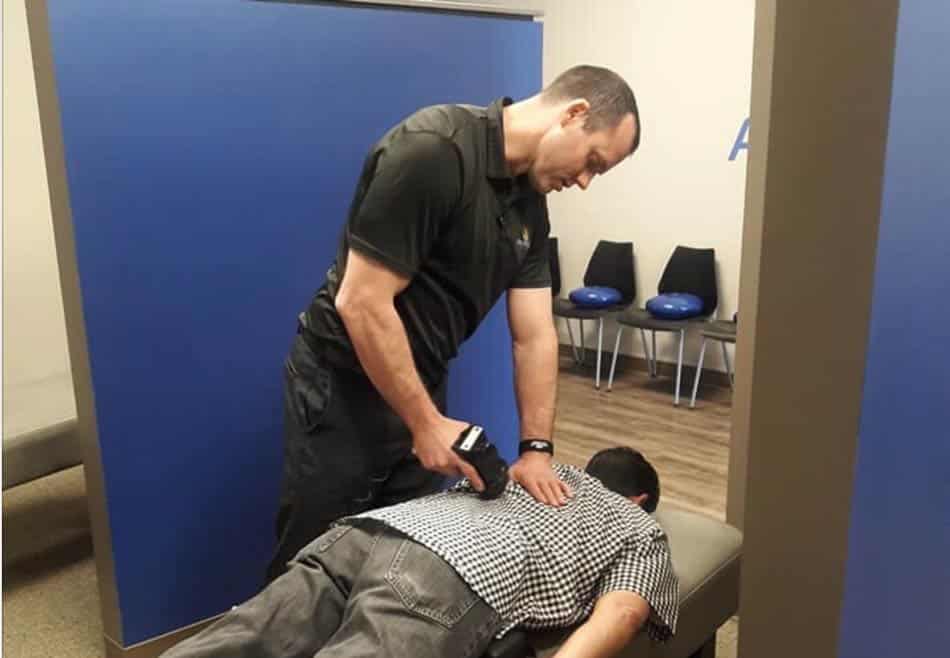
2 Responses
I have a mild case of scoliosis. My back is so tight and hurts. It feels like it needs to be popped. Is it okay to go to a chiropractor to have it popped? Or is it a waste?
Not a waste of time. I would recommend going to a Chiropractor who takes xrays. If you need any help please feel free to email me at thrivespinecenter@gmail.com